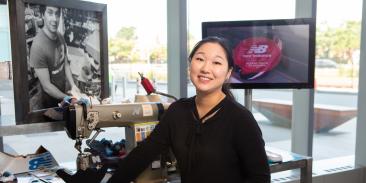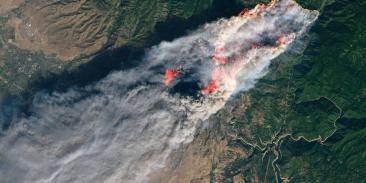New Report: Community Partnerships Key to Expanding America's Electric Grid
Community benefit frameworks help transmission projects gain support, stay on track
(WASHINGTON, D.C. – November 10, 2025) Developers of electric transmission projects can reduce delays, build trust, and deliver local value by engaging communities early and tailoring benefits to local priorities, according to a new report from Environmental Defense Fund and Clean Air Task Force. The report, Beyond the Wires: Community Benefits from Transmission Projects, presents five case studies covering six successfully constructed transmission lines, showing that well-designed community benefit frameworks (CBFs) help reduce opposition, avoid costly delays, and deliver lasting value for both developers and communities. Key findings include:
- Early engagement matters. Vineyard Wind (MA) partnered with the Town of Barnstable to deliver host community payments and support sewer upgrades and water quality protections, earning community buy-in before construction began.
- Innovative partnerships pay off. West of Devers (CA) co-owned assets with the Morongo Band of Mission Indians, advancing Tribal sovereignty and shared economic benefits.
- Mitigation avoids conflict. Big Eddy-Knight (WA/OR) financed land conservation to prevent litigation, while Mona-to-Oquirrh (UT) rerouted lines after costly disputes.
- Community investments last. Sunrise Powerlink and Sycamore-Peñasquitos (CA) reinvested project profits into local clean energy programs, strengthening long-term resilience.
“Communities are not roadblocks; they are critical partners in building a better electric grid. This report shows that community benefit frameworks should be a fundamental part of the transmission development process,” said Adam Kurland, Attorney, Federal Energy, Environmental Defense Fund. “Past projects show that frameworks aligned with local priorities, with fairly distributed benefits, can boost community trust and speed up critical infrastructure deployment.”
The Department of Energy’s 2024 Transmission Study found the U.S. needs about 5,000 miles of new high-capacity lines each year to keep the grid reliable, support economic growth, and deliver low-cost power, but last year just over 300 miles were built – nowhere near enough. Alongside permitting challenges, local opposition often plays a major role in slowing down or canceling new transmission projects.
"The United States must rapidly expand its electric transmission system to meet growing demand and transition to clean energy," said Nicole Pavia, Director, Clean Energy Infrastructure, Clean Air Task Force. "These case studies provide helpful insights into how developers have built stronger infrastructure by treating communities like true partners and addressing their long-standing concerns and key considerations for developers looking to do the same today."
The report highlights that flexibility in ownership and financing models, combined with supportive policy and regulatory frameworks, is critical to securing community support. Developers who consult communities, work with trusted local representatives, and address local needs are far more likely to deliver projects on time. Moving forward, the report recommends exploring regional negotiation approaches, tracking long-term community outcomes, and ensuring equity across diverse populations as the U.S. plans its next generation of transmission lines.
Read the full report and explore the case studies at edf.org/beyond-wires-community-benefits-transmission-projects.
With more than 3 million members, Environmental Defense Fund creates transformational solutions to the most serious environmental problems. To do so, EDF links science, economics, law, and innovative private-sector partnerships to turn solutions into action. edf.org
Latest press releases
-
New Report: Community Partnerships Key to Expanding America's Electric Grid
November 10, 2025 -
Open coalition on compliance carbon markets adopted at Belém Climate Summit to catalyze cost-effective climate action
November 7, 2025 -
Brazil’s call to action on integrated fire management and wildfire resilience elevates wildfire as a global priority
November 7, 2025 -
Electricity Bills Have Risen in 47 States, While Trump Administration Blocks the Cheapest, Cleanest Energy Sources
November 7, 2025 -
AGREE, EDF, and Rewiring America Secure Progress Towards Heat Pump-Friendly Electric Rates in Con Edison Rate Case
November 6, 2025 -
New Environmental Defense Fund Report Urges New York City to Take Unified Approach to Housing and Climate Crisis to Protect Communities from Future Displacement
November 6, 2025











